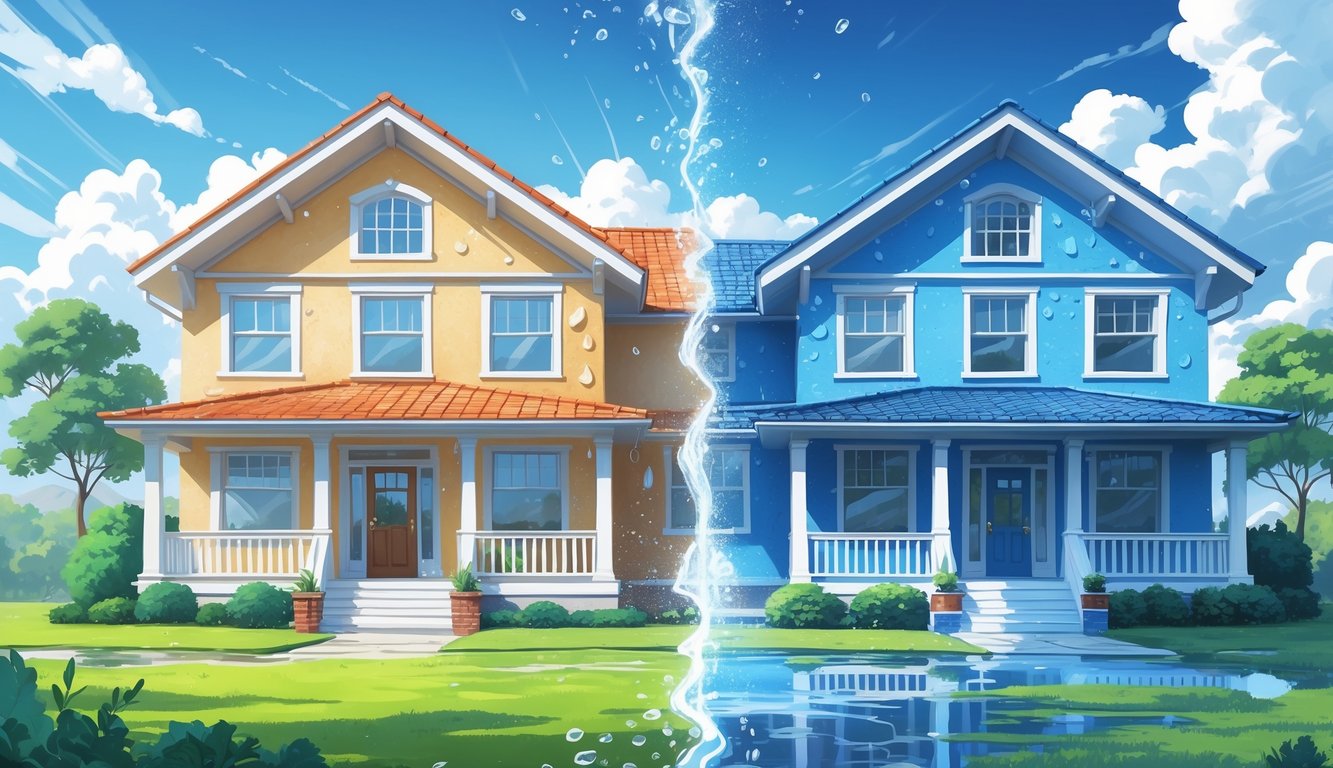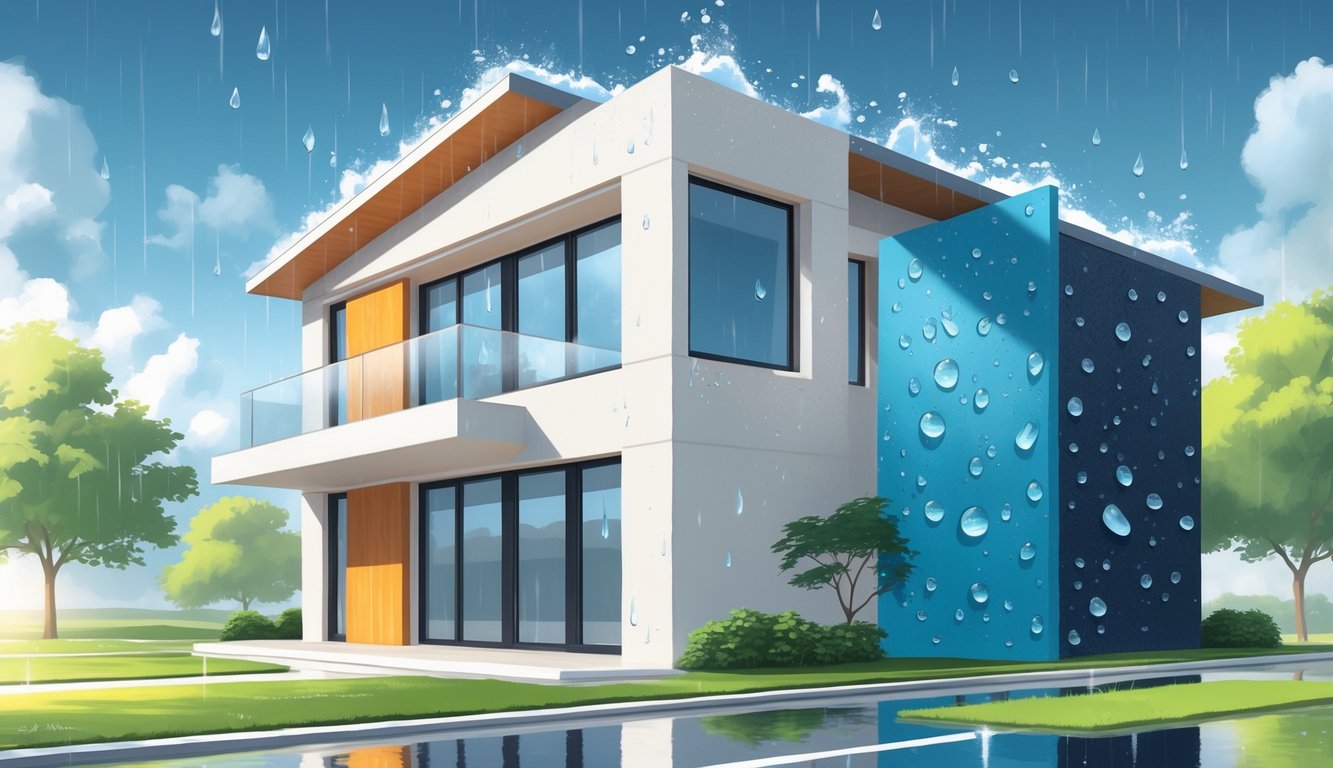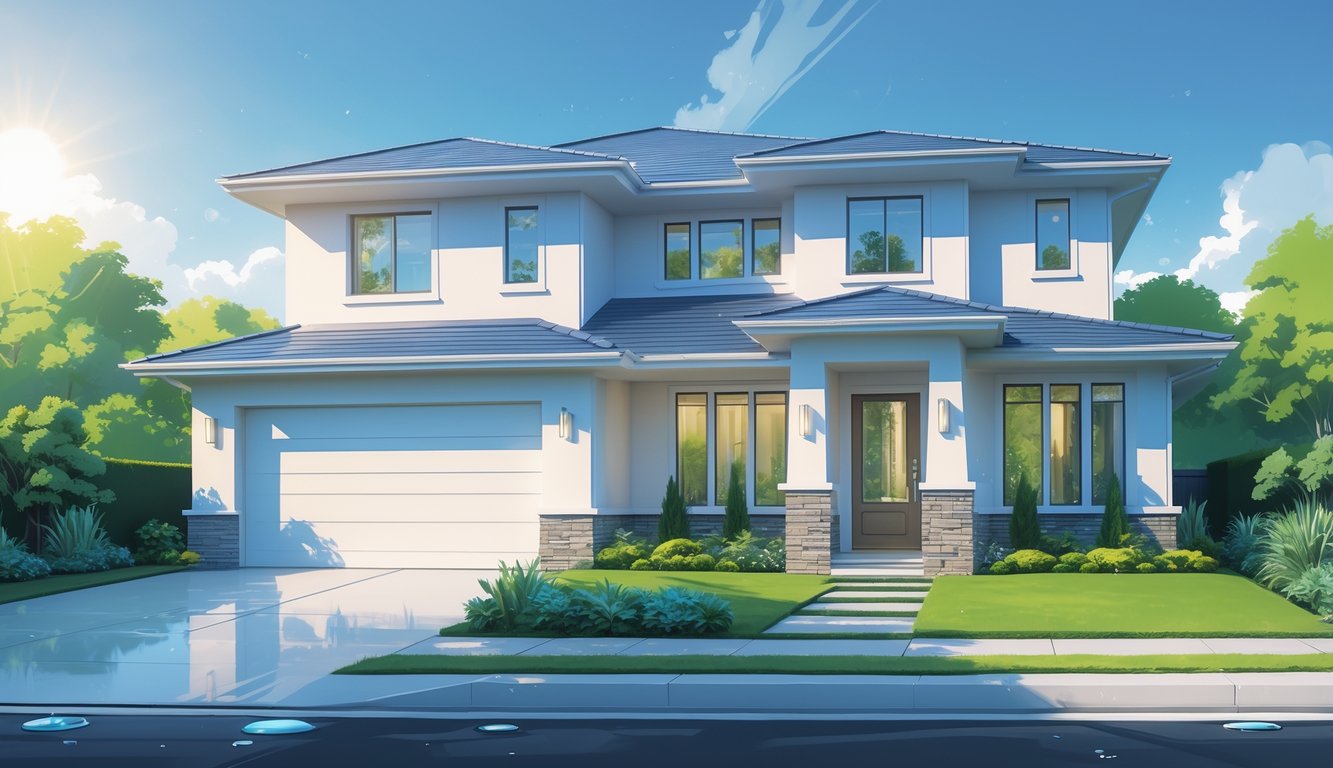
Types of Weatherproof Paints and Finishes

Blisters under my fingernails—okay, not literally, but you get the idea—just thinking about which paint won’t peel after one storm. Every label promises “premium durability,” “mold resistance,” but I’d love to see them survive a year in my neighborhood.
Acrylic and Acrylic Latex Paints
Glossy labels say “weatherproof,” but sometimes it just means the paint feels plasticky. Still, acrylic and acrylic latex? They’re popular for a reason. Water-based, dries fast, and cleanup doesn’t make you want to cry. Unlike oil-based, acrylic flexes a bit, so it’s actually good for wood that expands and contracts every five minutes.
Three months after I did my trim with a decent acrylic latex—no cracks, no weird yellowing, even around the gutters. The smell is less suffocating than oils, and apparently the VOCs are lower, which is nice if you care about that. But, and this is key, not all “acrylics” are made equal—dig into the specs for UV resistance and anti-blister claims (it’s all buried in guides like this one).
One more thing: flat finishes outside are a nightmare—every smudge shows, and you’ll never clean it. Semi-gloss or satin? Easier to wipe, not blindingly shiny, and they actually shed water when the weather turns.
Oil-Based Paints for Exteriors
Oil-based paints. Ugh. You know alkyds? I swear my garage still reeks, two years after I painted that fence my neighbor wouldn’t shut up about. These paints cling to old, crusty surfaces and don’t freak out when the humidity spikes. Mold? Meh, not really a problem. But then you’re stuck—sticky brushes, can’t touch the wall for a week, everything starts turning yellow before you even find the paint thinner.
There are still diehards who swear oil-based is the only thing that’ll survive full sun, especially if you go all-in on that blinding high-gloss. Rain just rolls off, but you’ll see your own reflection every time you walk past. I get why pros still use it for trim and doors or if you’ve got metal to deal with. But honestly, if you want to clean up before midnight or not be chained to solvents, latex is a lifesaver. Still, some weird, ancient houses just refuse to hold anything but oil. If you skip it, get ready for paint sheets peeling off in the wind. I wouldn’t wish that on anyone.
Surface Preparation and Primers
You could drop a hundred bucks on “premium” paint, slap it over a greasy, powdery, or just plain sketchy wall, and then—watch it peel off in strips. Like, literally, hours of work just flaking away because someone said, “Eh, looks fine.” No one ever tells you that even the fanciest paint won’t save you if you skip prep or primer—Sherwin-Williams claims it’s the cause of up to 80% of failures. That’s…a lot.
Proper Surface Preparation Techniques
Every time I try to convince someone that a quick wipe-down isn’t enough, they bring up those miracle cleaning sprays. Please. Mildew laughs at those. You gotta sand, scrape, or blast the surface—sometimes literally blow your house numbers off with a pressure washer. “Surface prep” isn’t a hack, it’s just a grind.
Supposedly, SSPC standards are overkill, but then you see paint jobs fail and suddenly, they make sense. If you spot a little rust or a stain, you’re not done. I’ve seen painters go full chemistry set—TSP wash, rinse, let dry for a day, and if the humidity’s above 85%, they won’t even start. Overkill? Maybe. But their paint never bubbles. I used to just caulk cracks and call it good—wrong. Leave gaps and moisture sneaks in, and then winter just destroys everything.
Choosing the Right Exterior Primer
Picking primer is about as exciting as sorting socks. I keep test jars like I’m prepping for a science fair. Oil primer? Awesome for blocking stains, especially if you’re fighting cedar or redwood that leaks tannins everywhere. Water-based, latex? Dries fast, doesn’t stink, but you better check it works over whatever mess is already there. “Paint and primer in one” is a scam, sorry—I tried it on chalky stucco and a year later, the paint was hanging off in strips.
Most brands say you need a real exterior primer on bare wood. They call it the “insurance layer,” and honestly, that tracks. A good primer makes paint stick, keeps weather out, and somehow makes colors look better and last longer. Vinyl? You need a bonding primer, not just any old can. I still check industry guides before big jobs, because you only get one shot at priming. And no, it’s not just for ancient houses—new builds are dusty and gross too.
Coverage, Color Retention, and Curb Appeal

Trying to get even coverage on a two-story? Good luck. I always find spots I missed days later, or weird splatters that weren’t there before. Weatherproof paints at least help hide some of the mess. They actually hold color instead of fading out in a week, which is more than I can say for the stuff I used in 2012.
Hiding Power and Even Coverage
You notice right away—premium paints (the expensive ones, obviously) cover old stains and colors way faster. I needed half the coats compared to some bargain bin junk, which still shocks me. Reviews back me up: good hiding power means less time on a ladder. “Coverage was amazing,” a Good Housekeeping tester said after painting rough masonry, which is normally a nightmare. These days, flat finishes can cover better than old-school gloss, which I wouldn’t have believed if I hadn’t seen it on my own drainpipe disaster.
Every paint brand claims “one coat,” but the actual formula matters. I spent a Saturday recoating a so-called premium paint that was basically colored water, then switched brands and nailed it in one go. Now I write “Don’t trust” on certain cans.